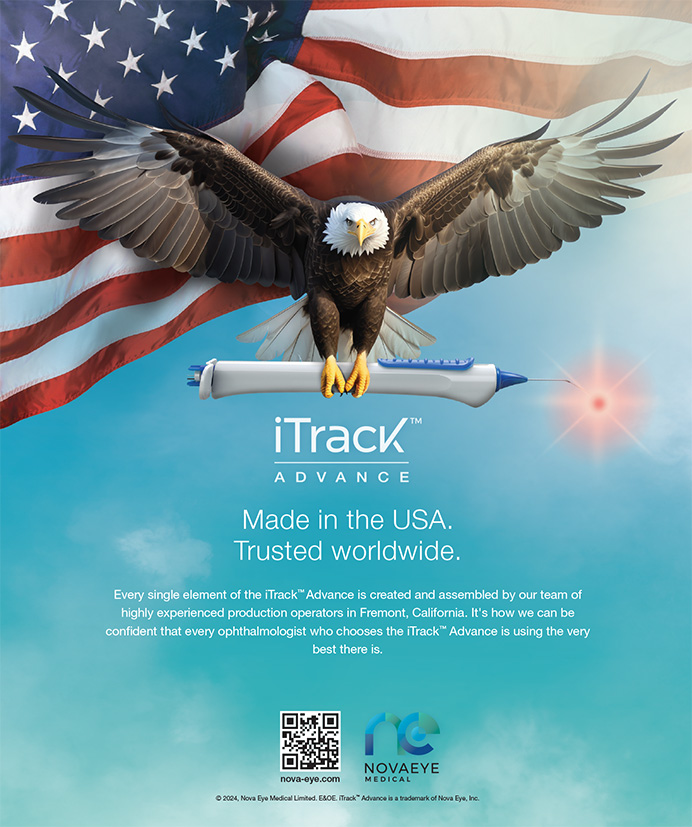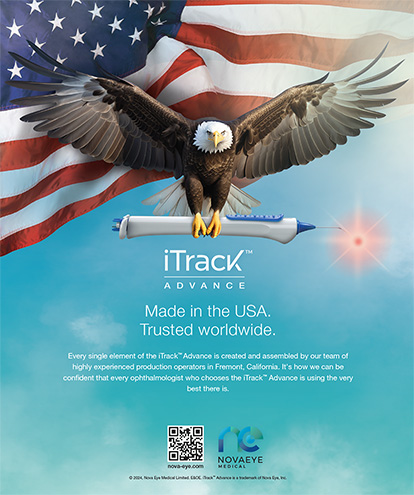This month’s installment of the “Inside Eyetube.net” column showcases brand-new features and techniques, which come to the ophthalmic world accompanied by high expectations and even higher challenges. The opportunities to predict corneal ectasia before a refractive procedure by analyzing corneal biomechanics, to reduce the risks involved in cataract surgery by means of laser devices, and to surgically lower IOP with minimally invasive procedures will allow ophthalmologists to perform safer and more effective surgeries in the years to come.
PREDICTING BEHAVIOR WITH BIOMECHANICS
Renato Ambrósio Jr, MD, presents preliminary clinical data demonstrating that the deformation responses of normal and ectactic corneas are different. Imagery obtained with dynamic ultra-high-speed Scheimpflug noncontact tonometry is displayed on a split screen to illustrate the differences in deformation threshold degree. The ability to use this new instrument and others that are currently available, like the Ocular Response Analyzer (Reichert, Inc., Depew, NY), will help ophthalmologists to analyze and quantify corneal biomechanical properties and identify which corneas will be at risk of ectasia after a refractive procedure. All of this can be done before detecting any geometrical sign of ectasia (Figure 1) (http://eyetube.net/?v=rugeg).
SAFETY BEYOND PRECISION
A series of videos is dedicated to applications for laser cataract procedures using the LenSx laser system (Alcon Laboratories, Inc., Fort Worth, TX). The system facilitates the placement of a multifocal IOL through a perfectly round capsulorhexis. Stephen Slade, MD, presents a case pairing the AcrySof IQ Restor IOL +3.0 D (Alcon Laboratories, Inc.) with the LenSx laser technology. After the eye is docked to the laser system, Dr. Slade plans the capsulotomy, lens fragmentation, arcuate incisions, and the primary and secondary incisions. The laser performs these steps prior to the patient’s relocation to the OR. In the OR, the IOL and cortical material are removed with the Infiniti Vision System’s Ozil IP (Alcon Laboratories, Inc.), and the AcrySof IOL is inserted (http://eyetube.net/series/alconlivesurgery/2011sandiego/laser-refractive-cataract-surgerywith-the-alcon-lensx-laser/medium/).
Even with the best surgical technique, it is possible for the centers of the pupil and a multifocal optic to be misaligned, which can produce visual distortion. Allon Barsam, MD, and Eric Donnenfeld, MD, present data on the use of argon laser iridoplasty to improve visual function after the implantation of a multifocal IOL. They apply argon laser energy to the midperiphery of the iris to move the pupil centrally and improve far and near BSCVA (Figure 2) (http://eyetube.net/?v=womed).
MINIMALLY INVASIVE GLAUCOMA SURGERY
Iqbal Ike Ahmed, MD, demonstrates the implantation of an Ex-Press Glaucoma Filtration Device (Alcon Laboratories, Inc.) in an 82-year-old woman with advanced glaucoma. Dr. Ahmed creates a scleral flap large enough to cover the device’s external plate. He makes the sclerostomy with a 25-gauge vitreoretinal trocar at the anterior spur. It is important to note that the entry plane is parallel to the iris. Dr. Ahmed uses a slipknot flap closure for added IOP control (http://eyetube.net/series/alconlivesurgery/2011sandiego/ex-press-glaucoma-filtration-deviceimplantation/medium/).
Gabor Scharioth, MD, performs a routine canaloplasty and creates a paracentesis to reduce the IOP. He inserts a flexible microcatheter around the entirety of Schlemm canal. The illuminated tip indicates the catheter’s position. Currently, there are two catheters for Schlemm canal available—the iTrack (iScience Interventional, Menlo Park, CA) and GlaucoLight (Dutch Ophthalmic USA, Exeter, NH; not available in the United States). Ultimately, the surgeon removes the catheter to leave a suture through the canal. Dr. Scharioth also demonstrates the insertion of the iStent (Glaukos Corp., Laguna Hills, CA; not available in the United States). This trabecular microbypass system was developed to address the limitations of current medical and surgical therapies for glaucoma treatment (http://eyetube.net/?v=besee).
CONCLUSION
Each procedure and instrument mentioned in this column may reduce complications and side effects related to refractive, cataract, and glaucoma surgery. As always, accurate surgical planning and a precise approach will improve patients’ safety and satisfaction.
Section Editor Elena Albé, MD, is a consultant in the Department of Ophthalmology, Cornea Service, Istituto Clinico Humanitas Ophthalmology Clinic, Milan, Italy. She acknowledged no financial interest in the products or companies mentioned herein. Dr. Albé may be reached at +39 0331 441721; elena.albe@gmail.com.
Section Editor Richard M. Awdeh, MD, is the director of technology transfer and innovation and an assistant professor of ophthalmology at the Bascom Palmer Eye Institute in Miami. He is a consultant to, speaker for, and receives grant support from Alcon Laboratories, Inc. Dr. Awdeh may be reached at (305) 326-6000; rawdeh@med.miami.edu.
Section Editor William B. Trattler, MD, is the director of cornea at the Center for Excellence in Eye Care in Miami and the chief medical editor of Eyetube.net. He acknowledged no financial interest in the products or companies mentioned herein. Dr. Trattler may be reached at (305) 598-2020; wtrattler@earthlink.net.


